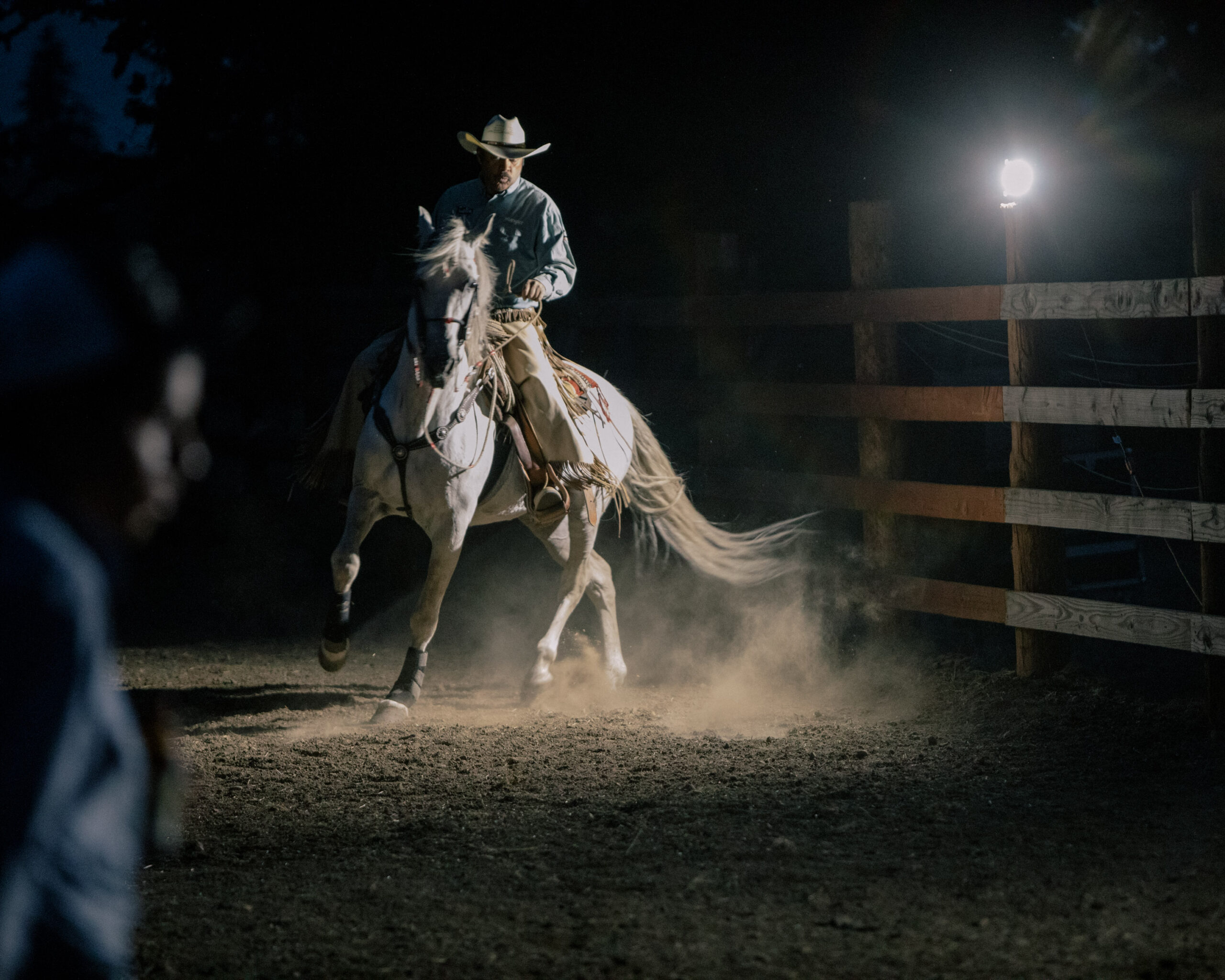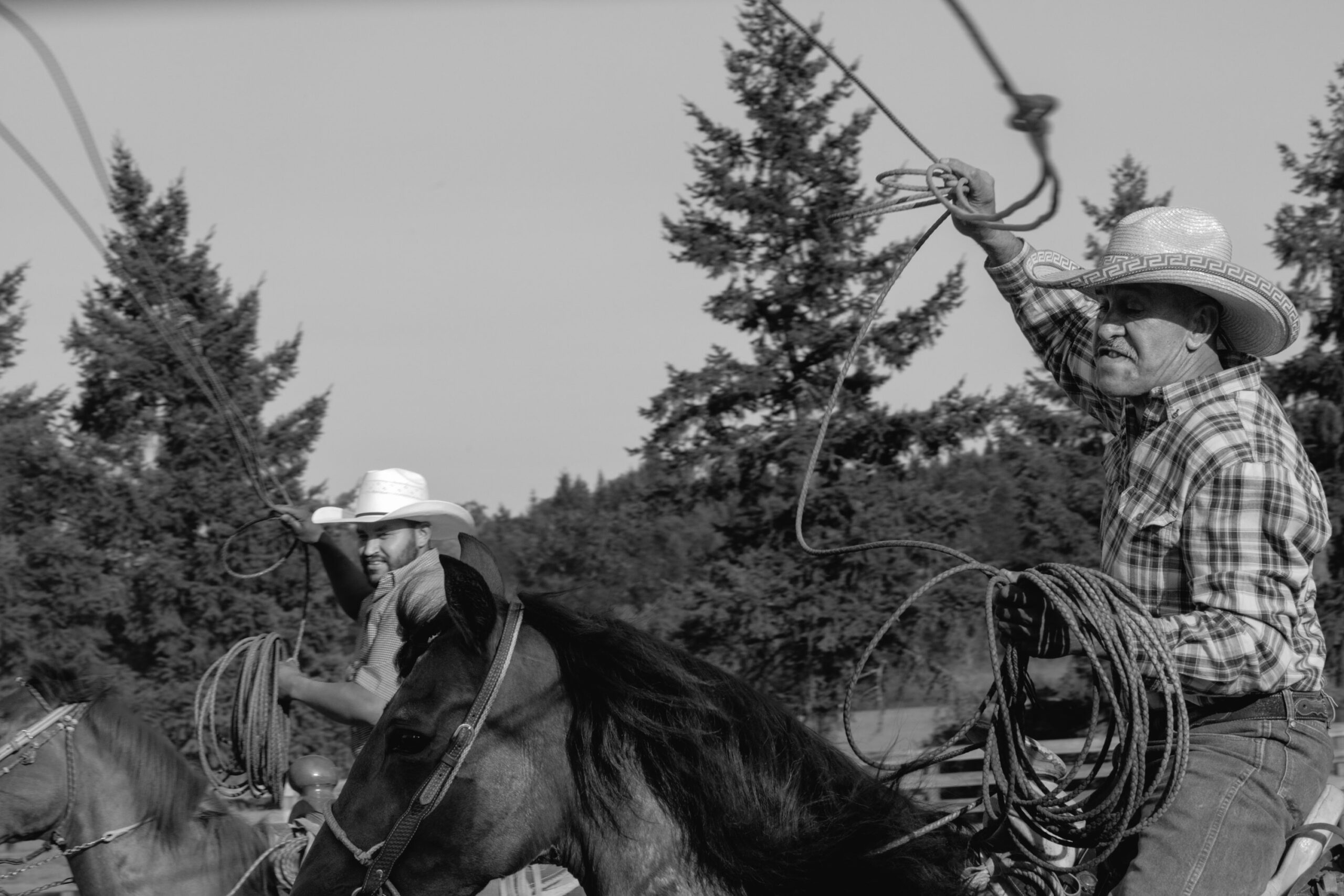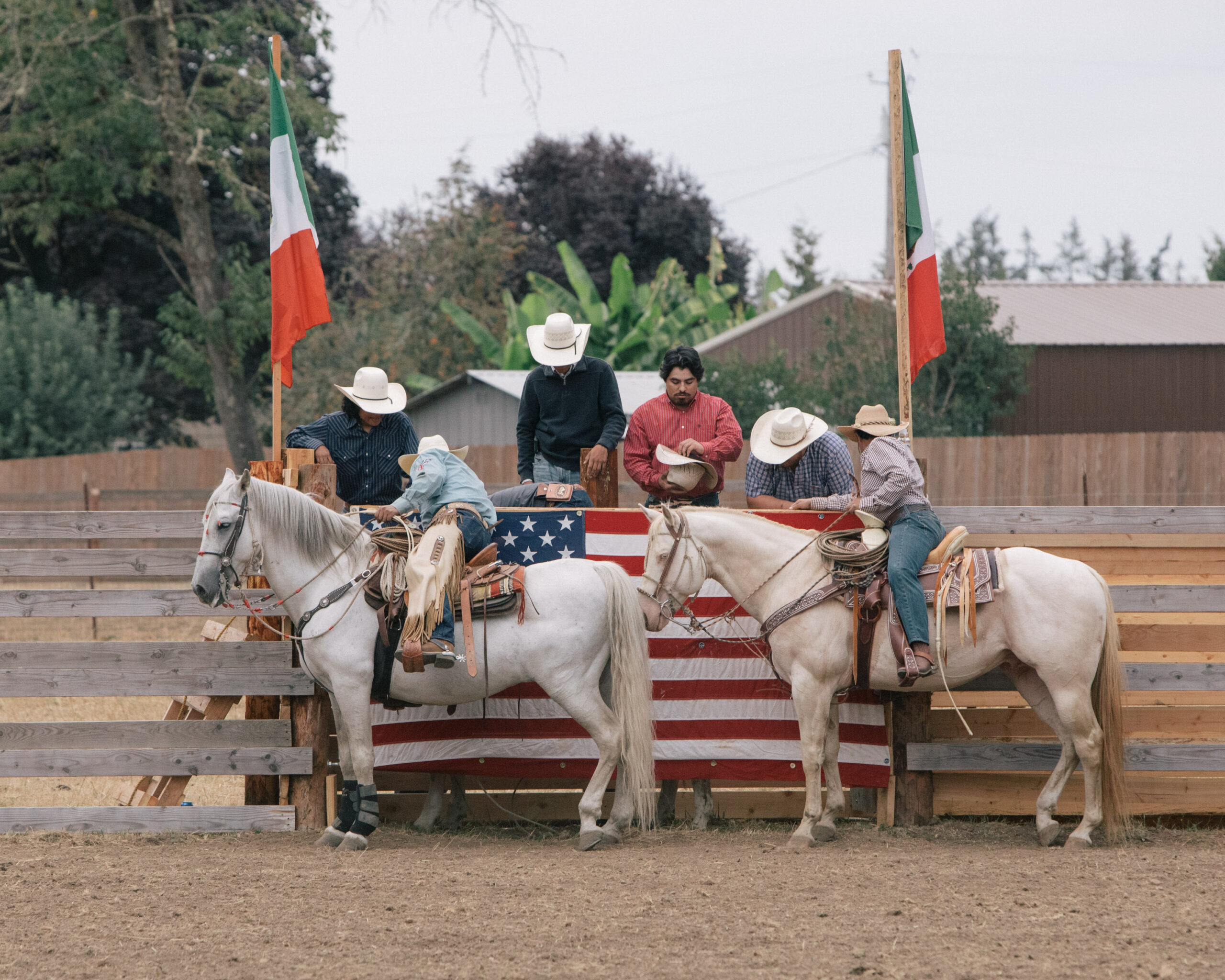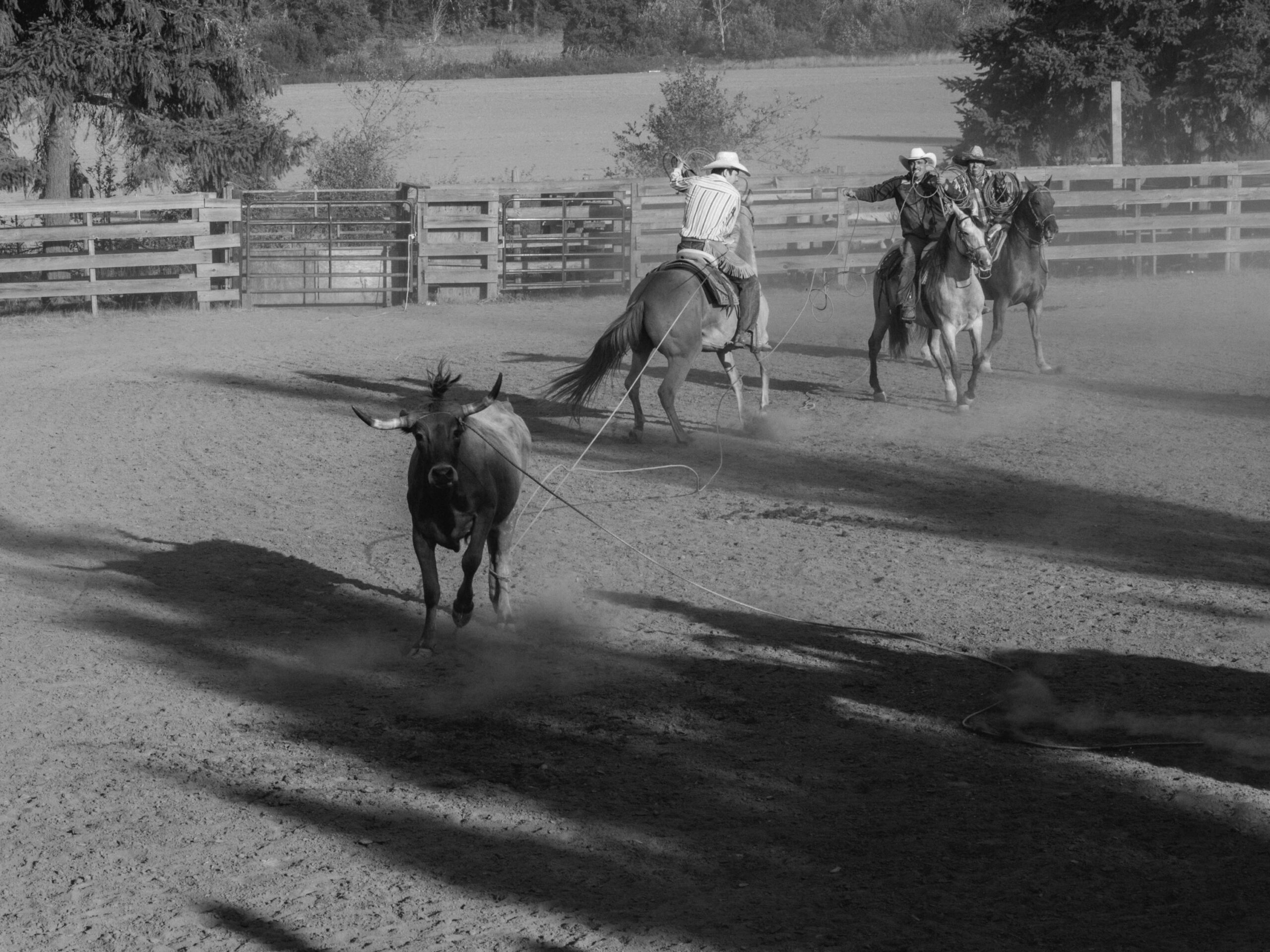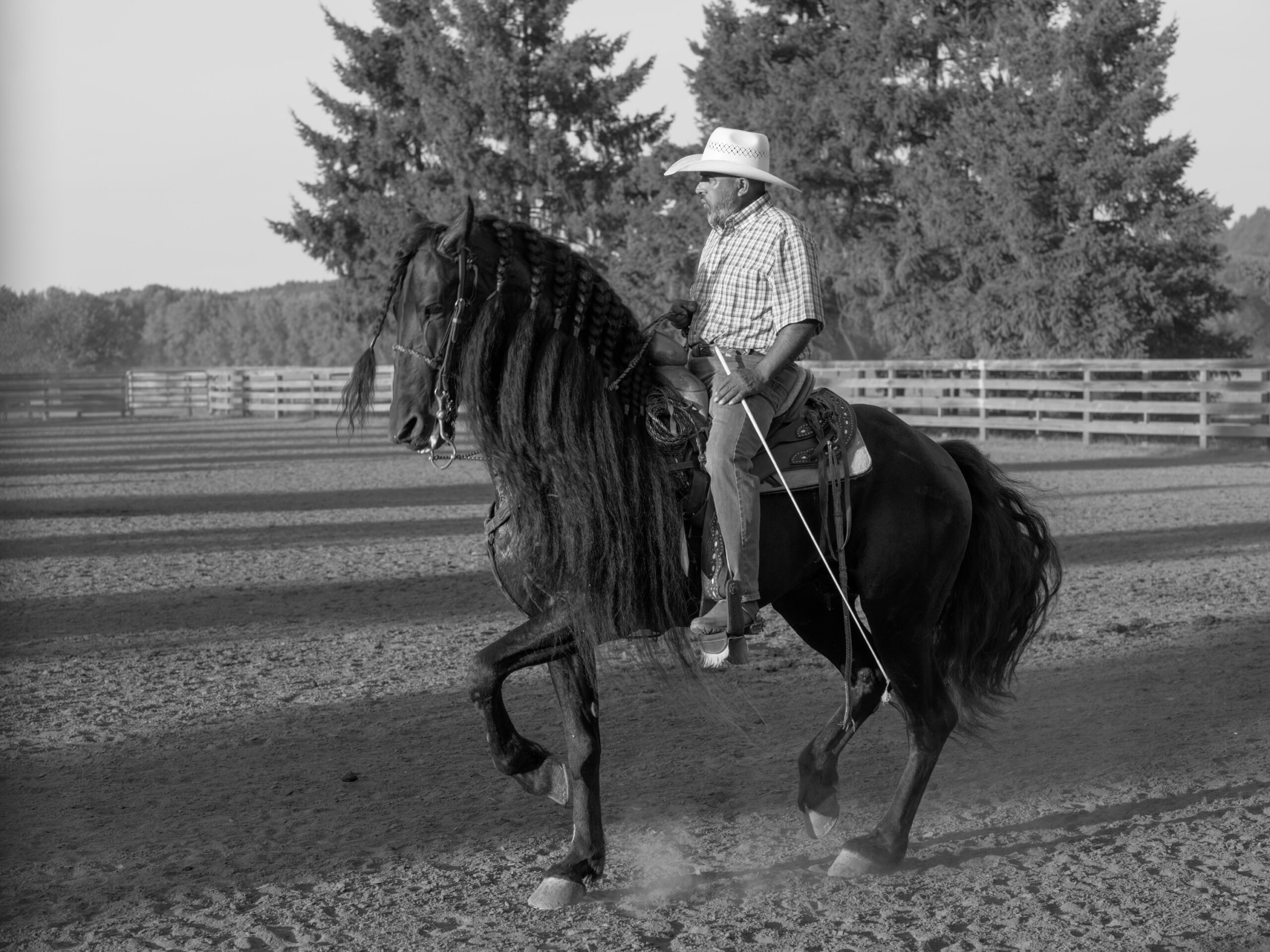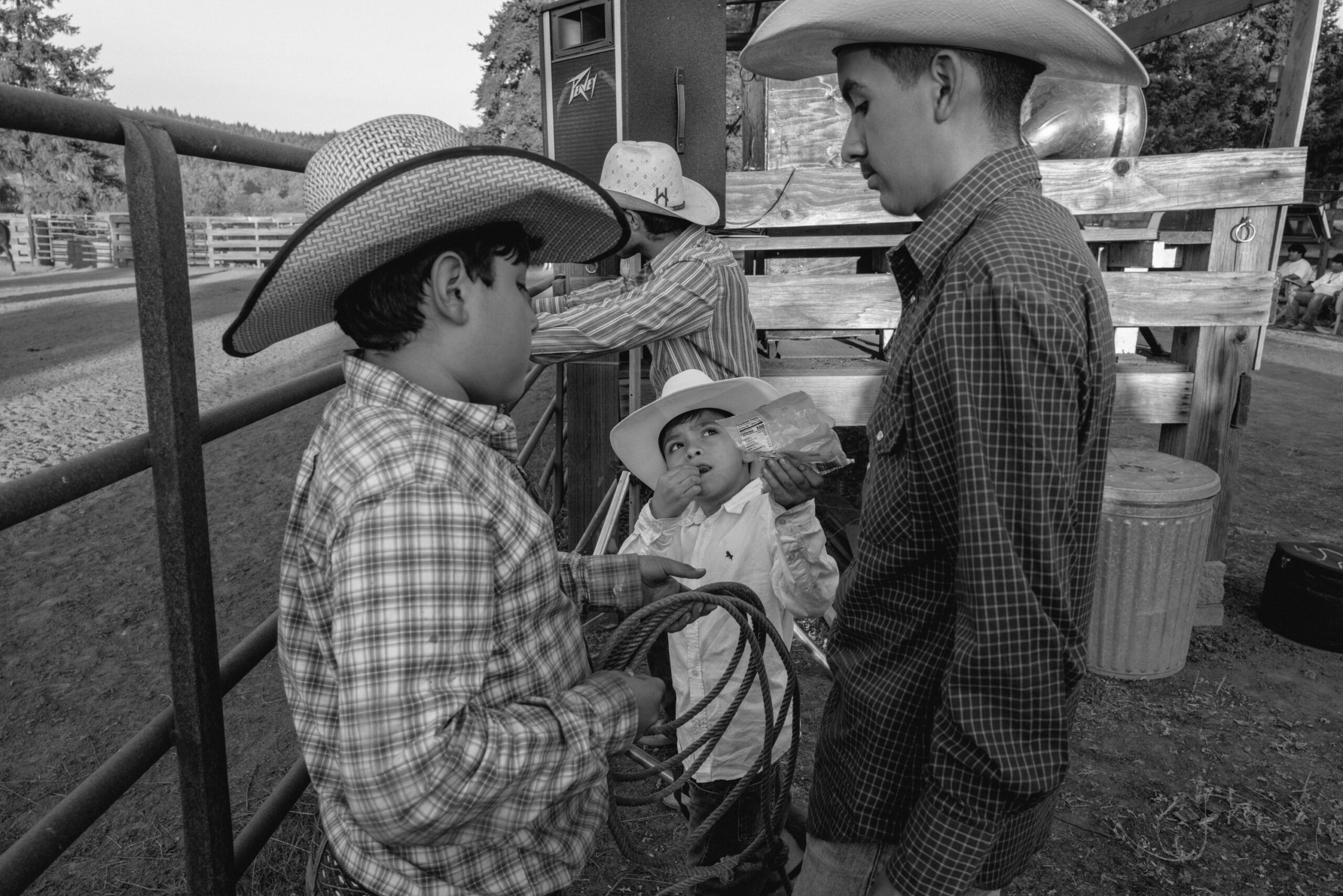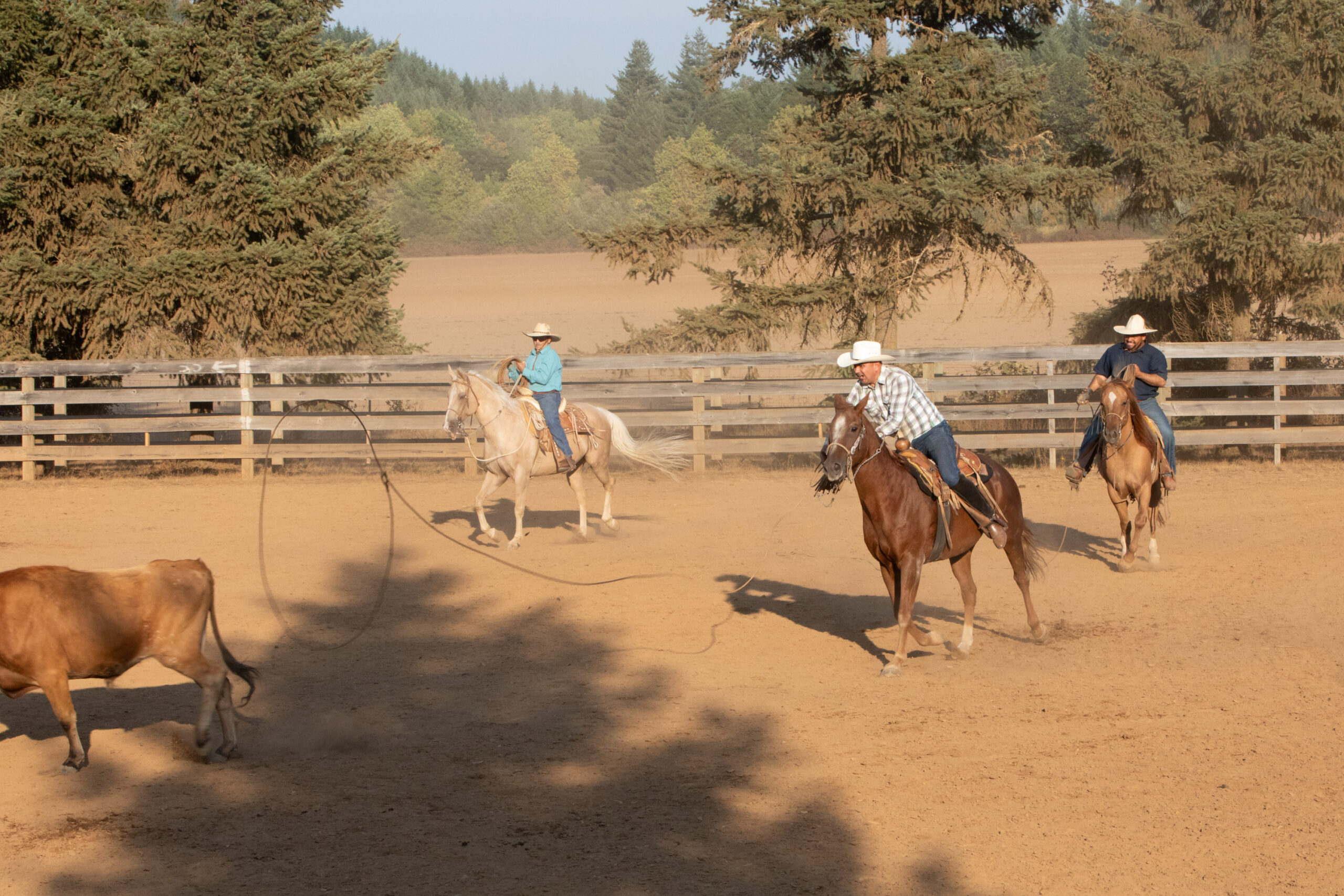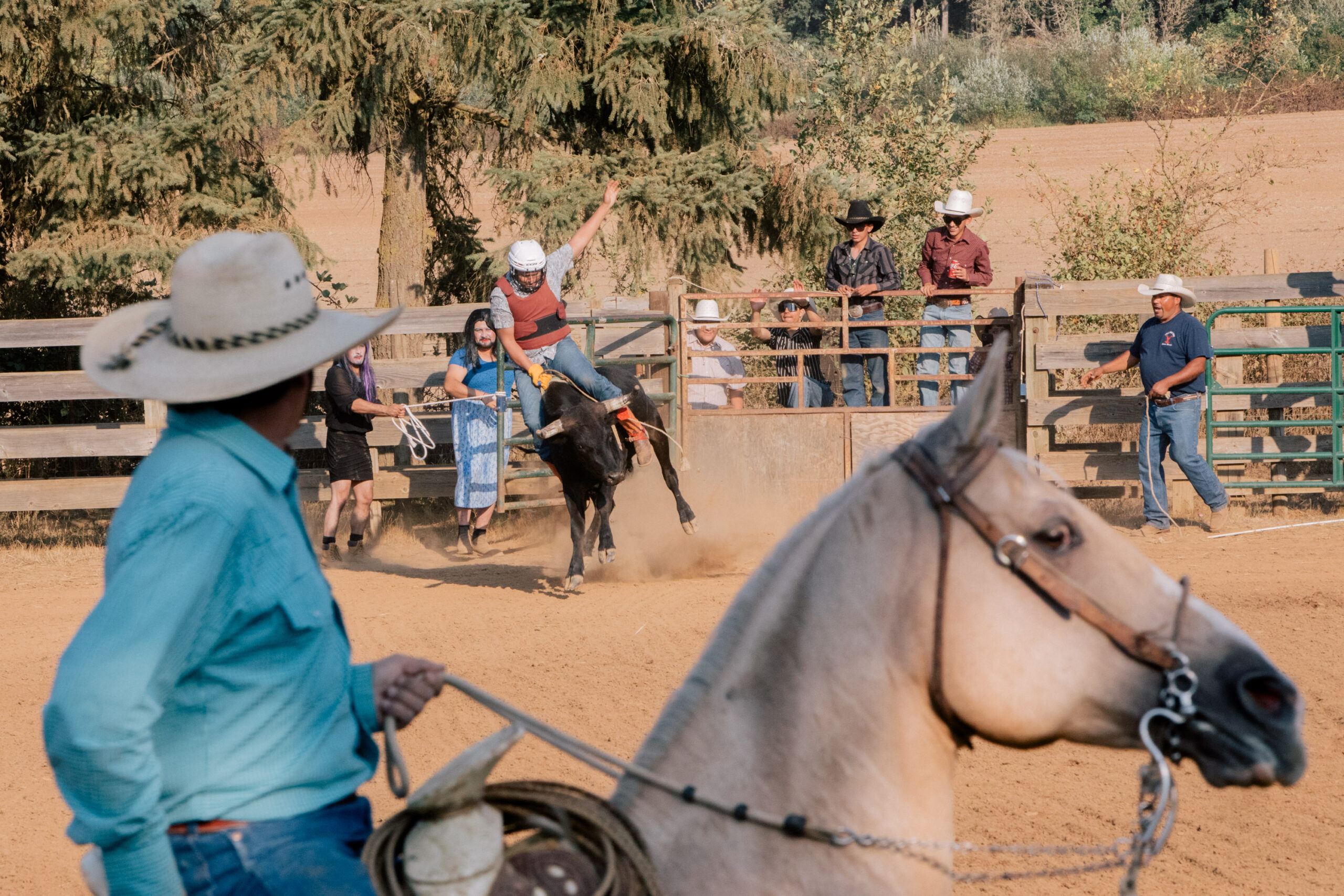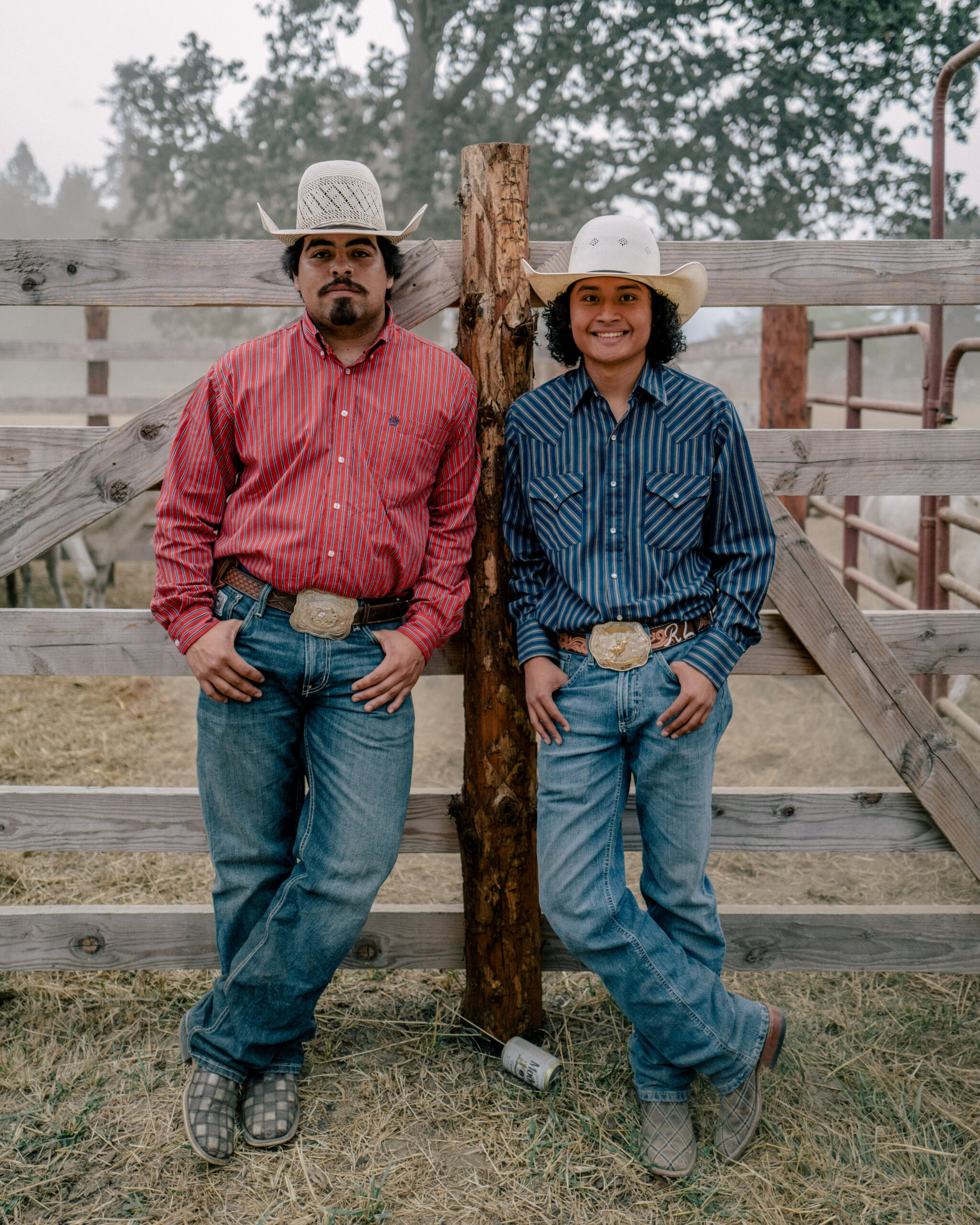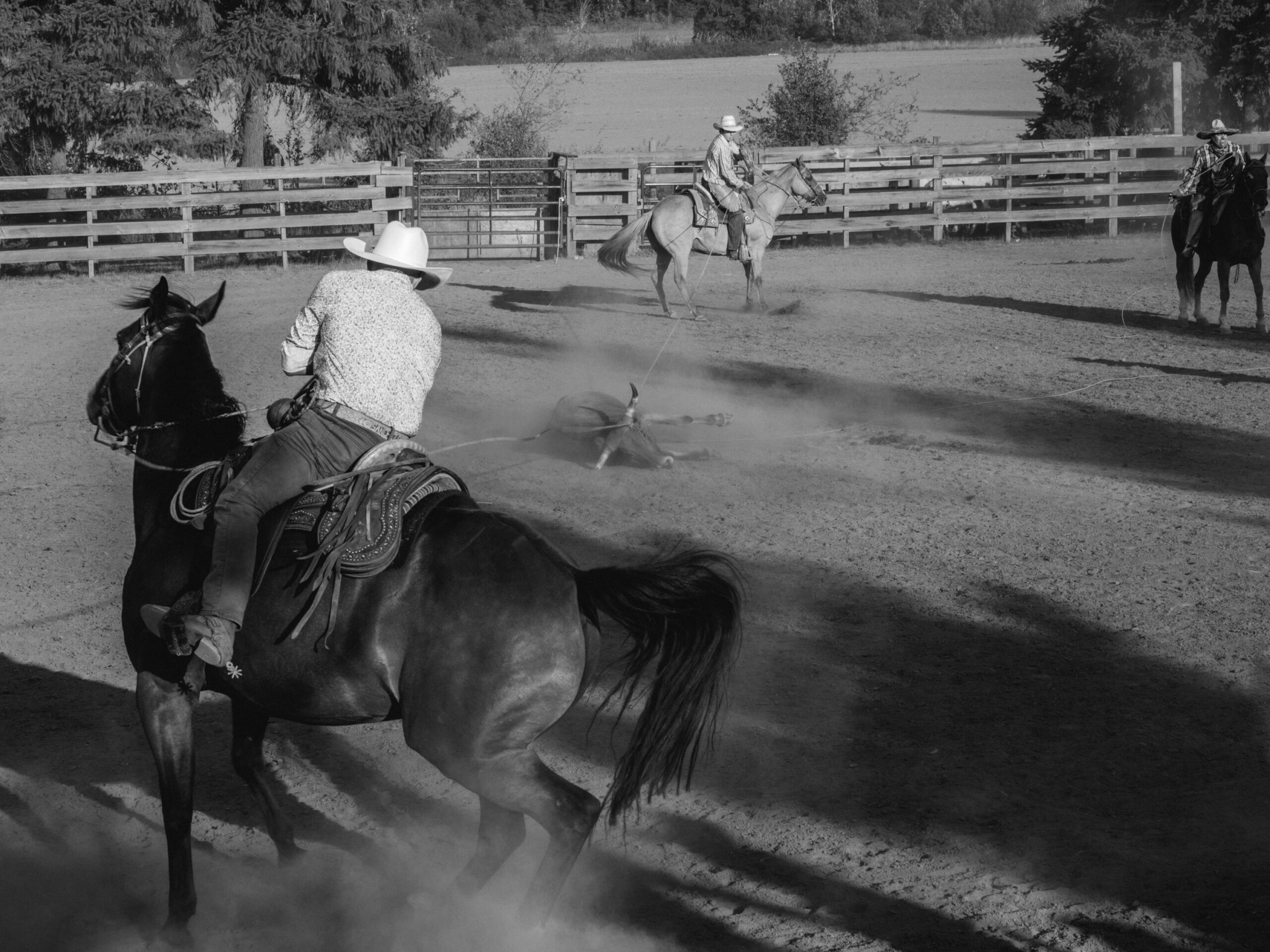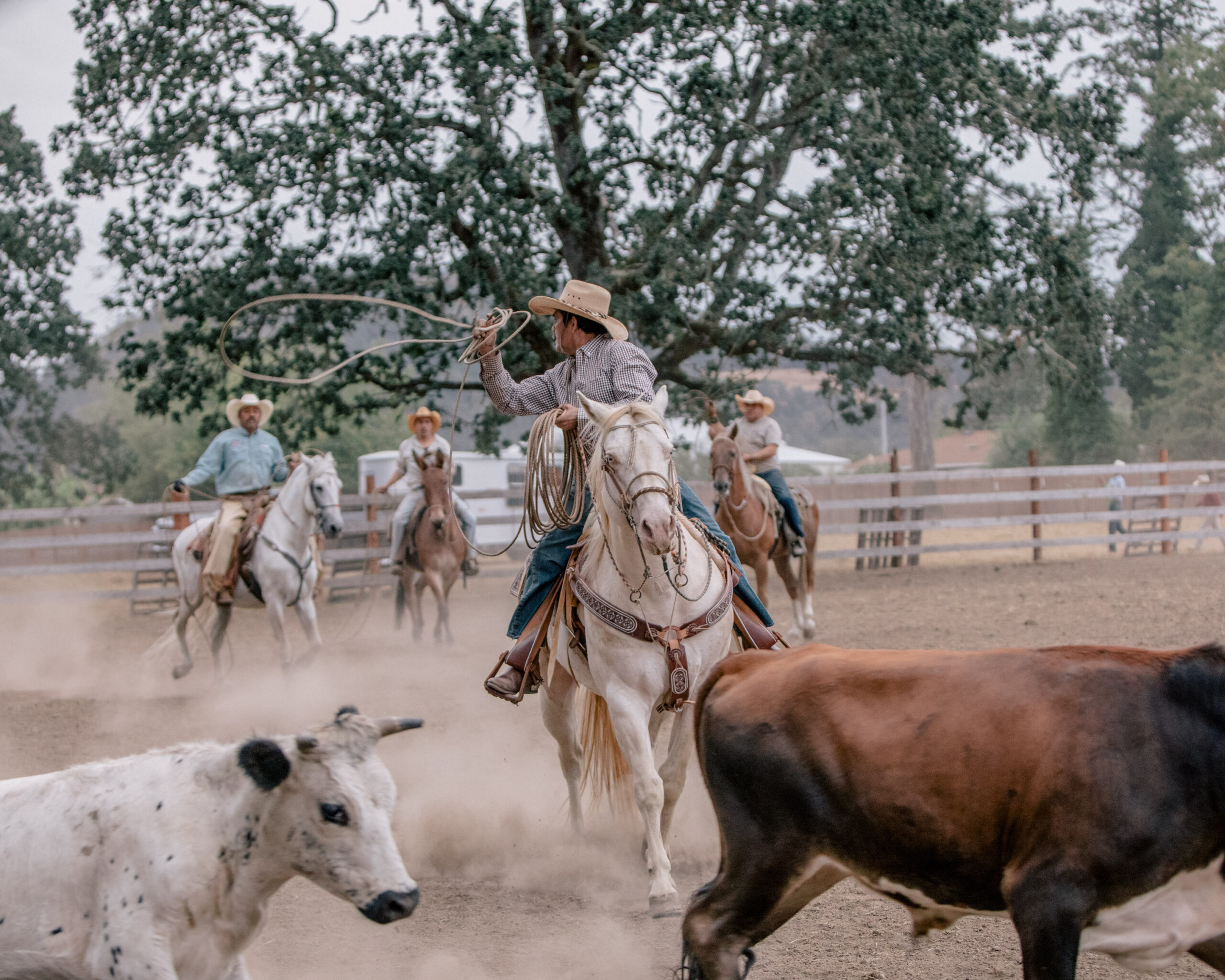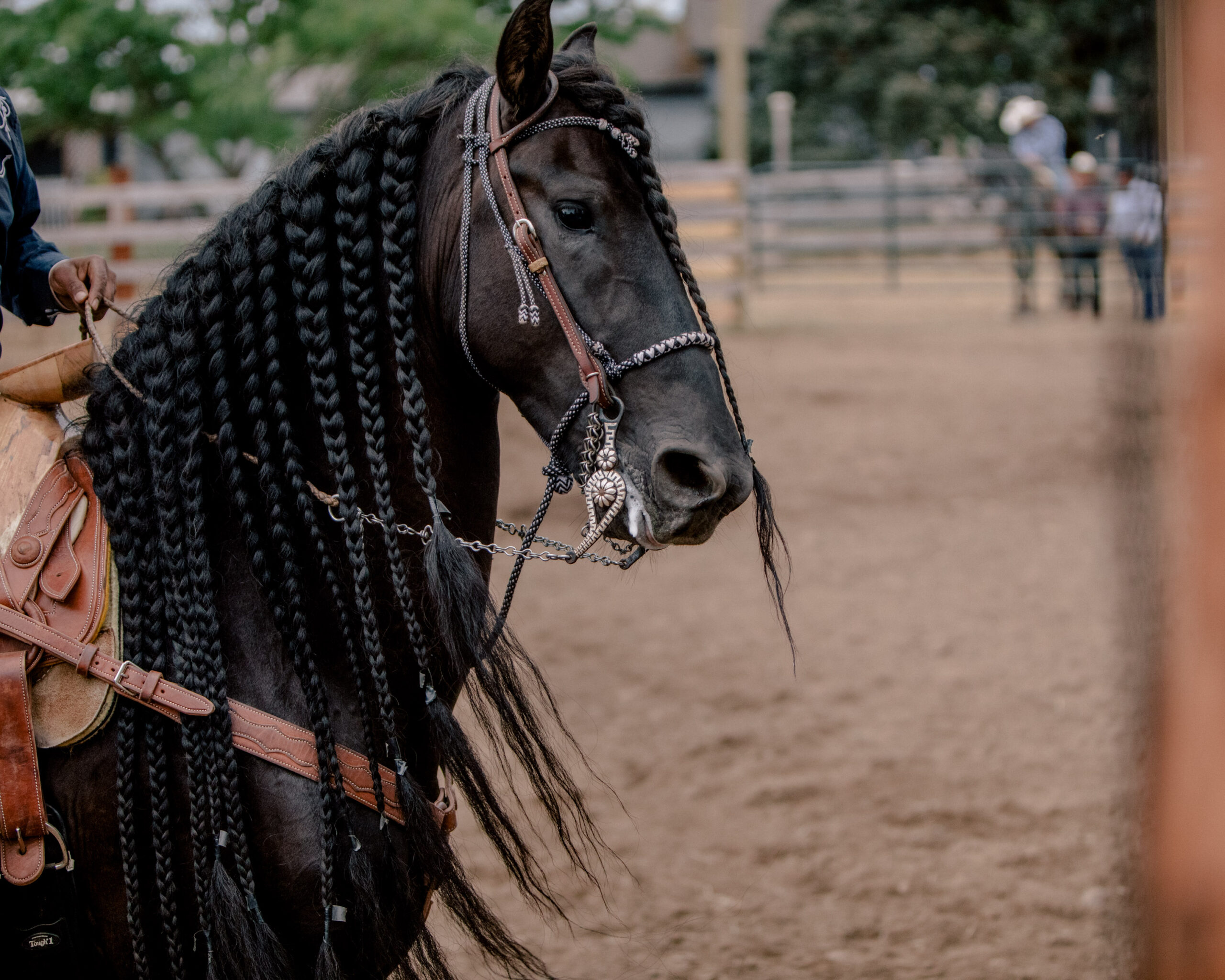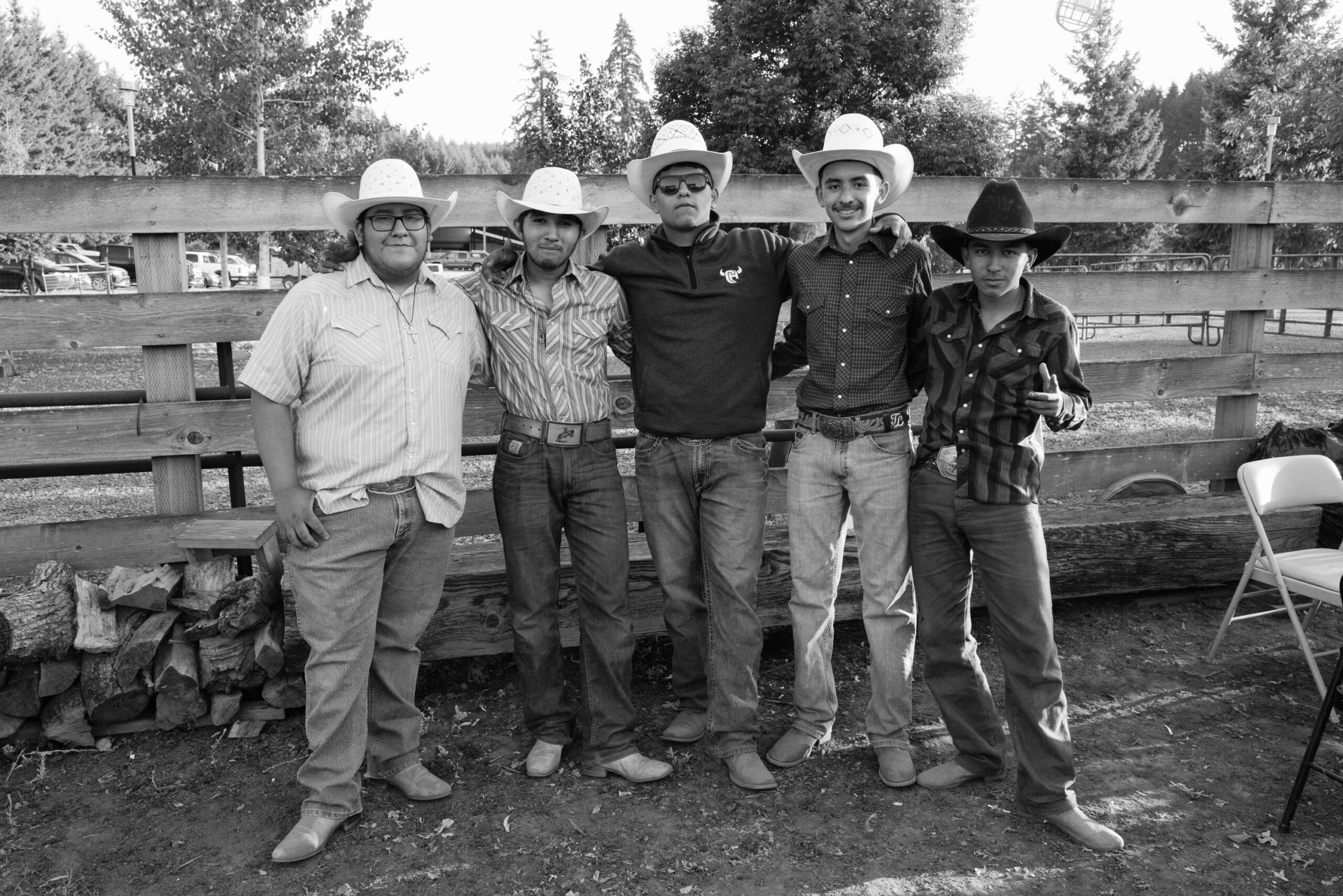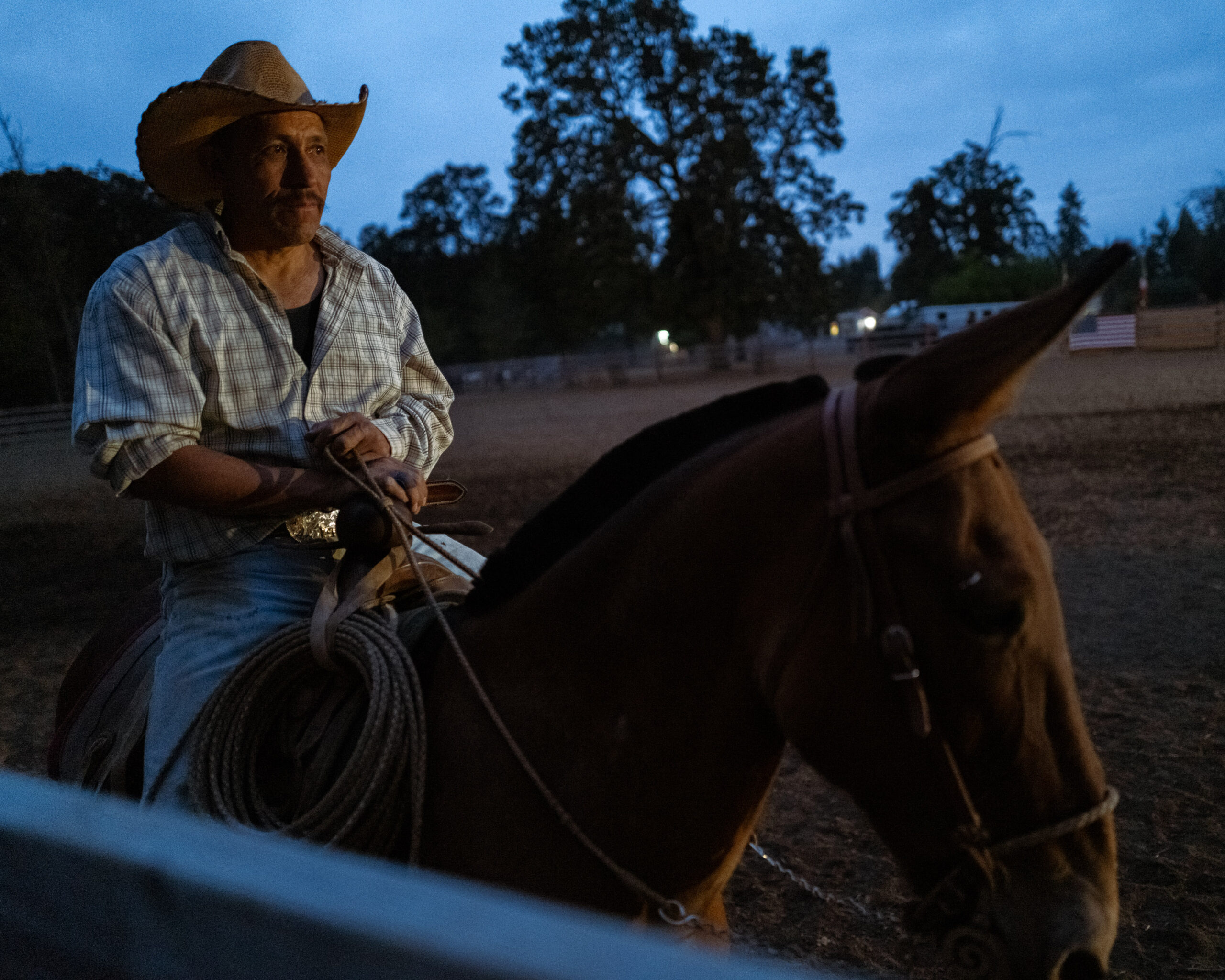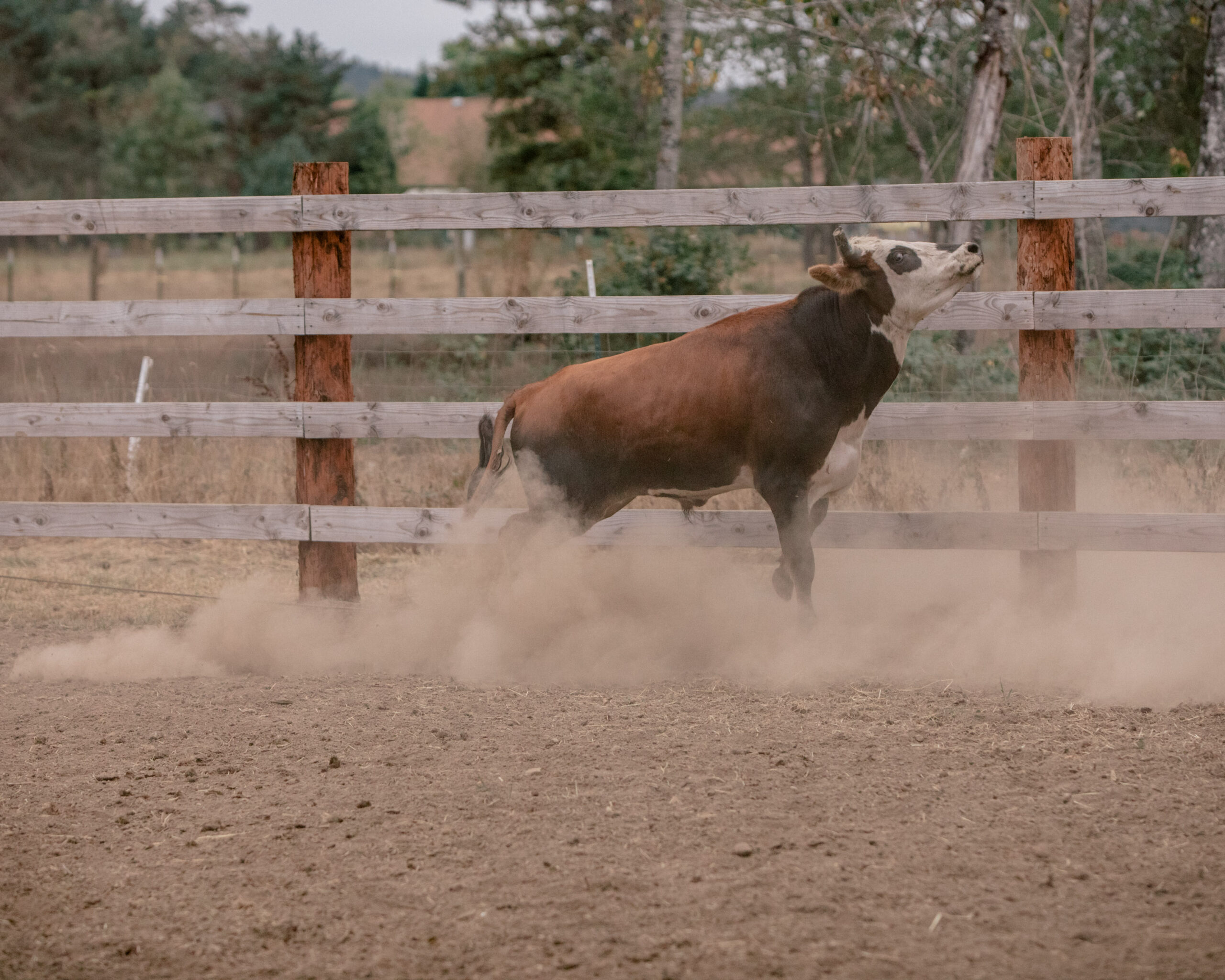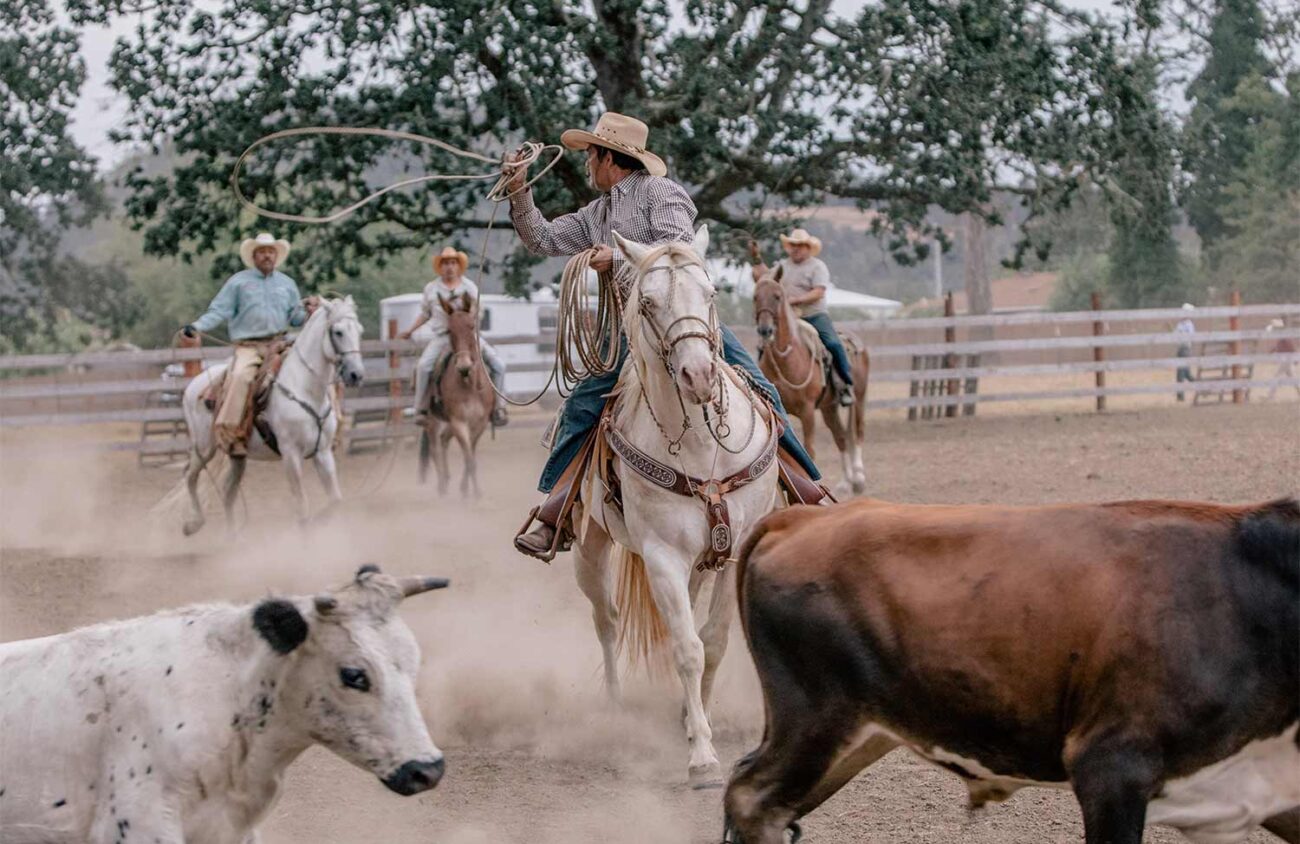The pageantry was centered in the arena — the dancing horses, the rope tricks, the bull riding — a brass band, complete with a tuba, played in the background as members of the local Latino community gathered to show off their equine and ranch talents, and the horses themselves, and celebrate Mexican Independence Day Sept. 16, 2023.
Riders sat their mounts with a grace and ease that belied the skills needed to ask their mounts to prance in place or to tolerate a rawhide lasso being swung around them — either as a rope trick or to rope the hind legs of a steer.
At the celebration in rural Monroe that September day, it was clear who had the horsemanship skills.
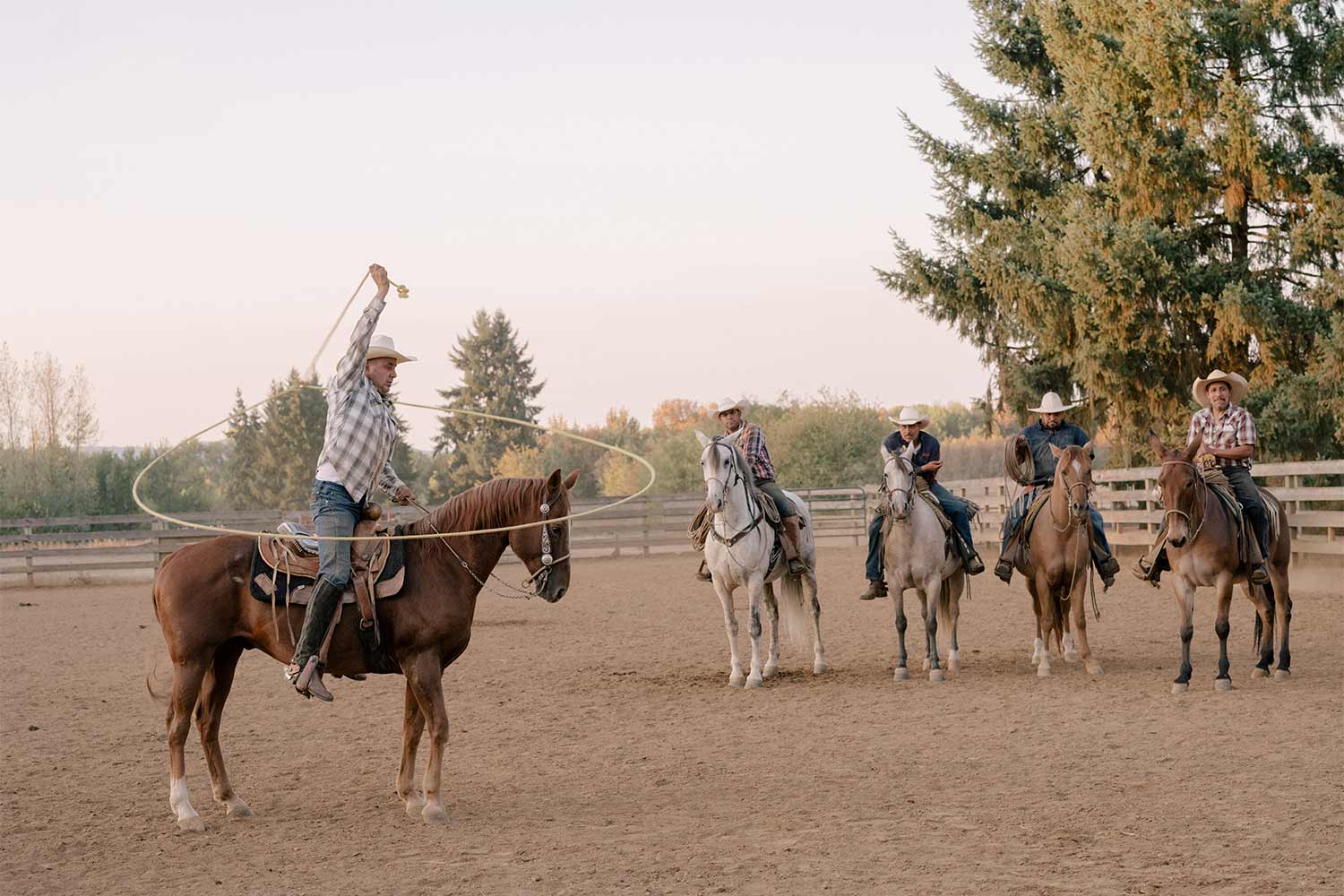
“This is true for Black and Native communities, too,” says Antonio Huerta, who demonstrated his rope skills that day. “White American culture does not see or think of people of color as ‘horse people.’”
But, he adds, “There are a lot of people incredibly talented or knowledgeable about horsemanship.”
Equestrian sports tend to be elitist, he continues. “This is a white man’s discipline. It’s the Mexicans doing the hard work training the horses until they are more rideable.”
Huerta, director of Comunidad y Herencia Cultural, is a charro. Charrería dates back to the 1500s and is the skill and art form that involves horsemanship, working cattle and the sophisticated use of the rope.
Huerta says that charrería, México’s national sport (not soccer, as some might believe), started when the Spanish reintroduced horses and cattle to the American continent. He says the animals reproduced swiftly, to the point that the Spanish needed help from the Indigenous people to keep the cattle in a particular area. Previously, the Spaniards had prevented them from riding.
He says, “Out of the need of working with horses and cattle, people started to develop roping skills and moving the cattle around to the degree that it really became their passion.”
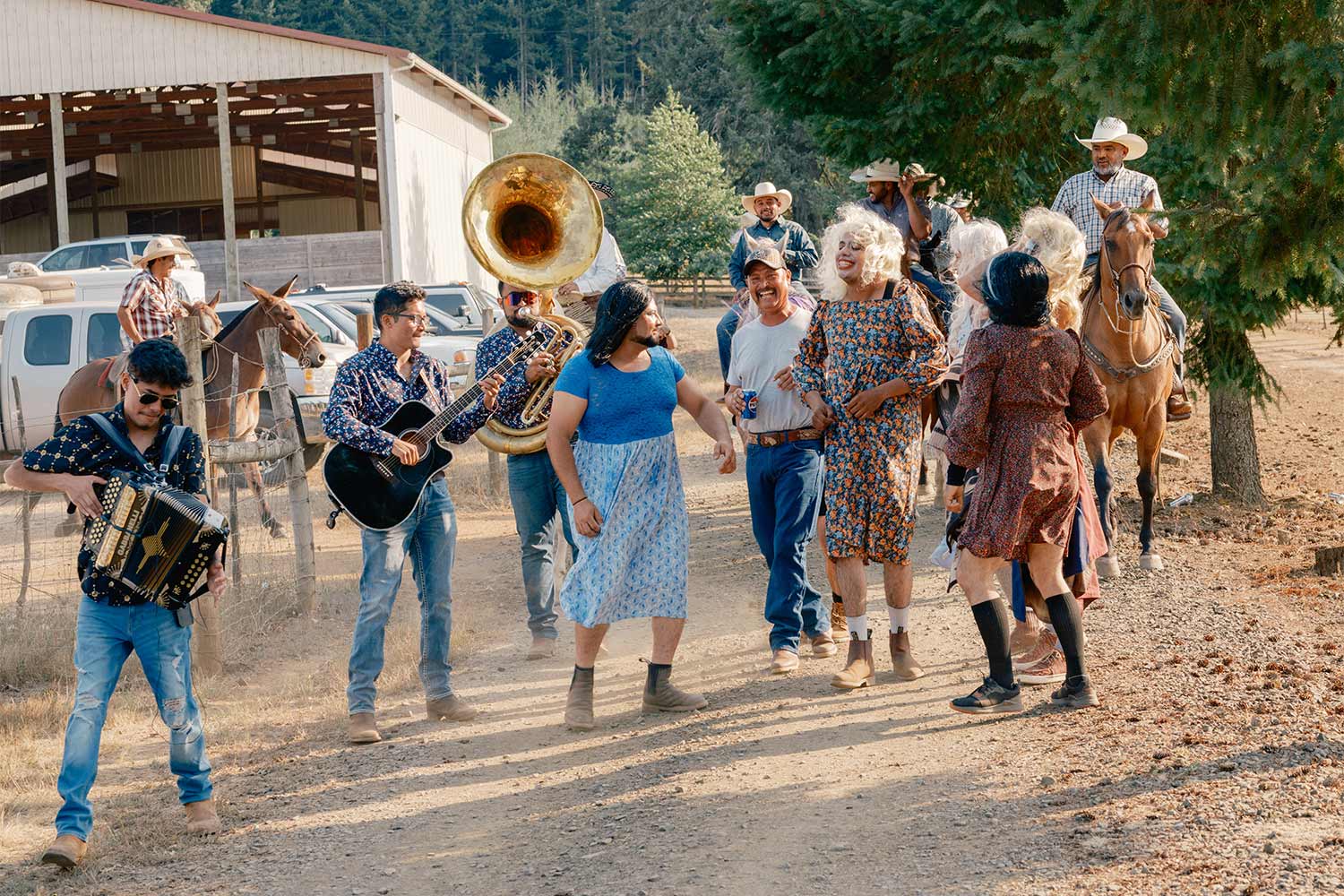
There are nine events in charrería, and Huerta says, “there are several disciplines that are very common within the American rodeo, such as bull riding, team roping, reining and bronc riding.”
And while the Spanish brought their attire and equipment with them, it was by necessity adapted to the landscape of México, he says. The Spanish sombrero is not as wide nor as heavy as the Mexican one “where the wide-brimmed sombrero protects from the rain and the sun.”
The Mexican community, he continues, “started using the rawhide rope because that is what was available. The outfit, too, is made from the leather of the animals.”
You may have seen Huerta in his charro outfit pictured at the Eugene Airport, at a museum or in a local library. As part of his work through Comunidad y Herencia Cultural he does extensive outreach into the community to show Latinx youth themselves and their heritage represented in those spaces.
Huerta started doing activities with Comunidad y Herencia Cultural in 2016 and incorporated soon after as a nonprofit. The organization puts on cultural events, music and dance presentations and workshops, leatherwork workshops, and he says he is working to expand further into riding and rope trick lessons or programming. The group also goes into schools — mainly Springfield and Bethel, he says — and participates in parades throughout the state.
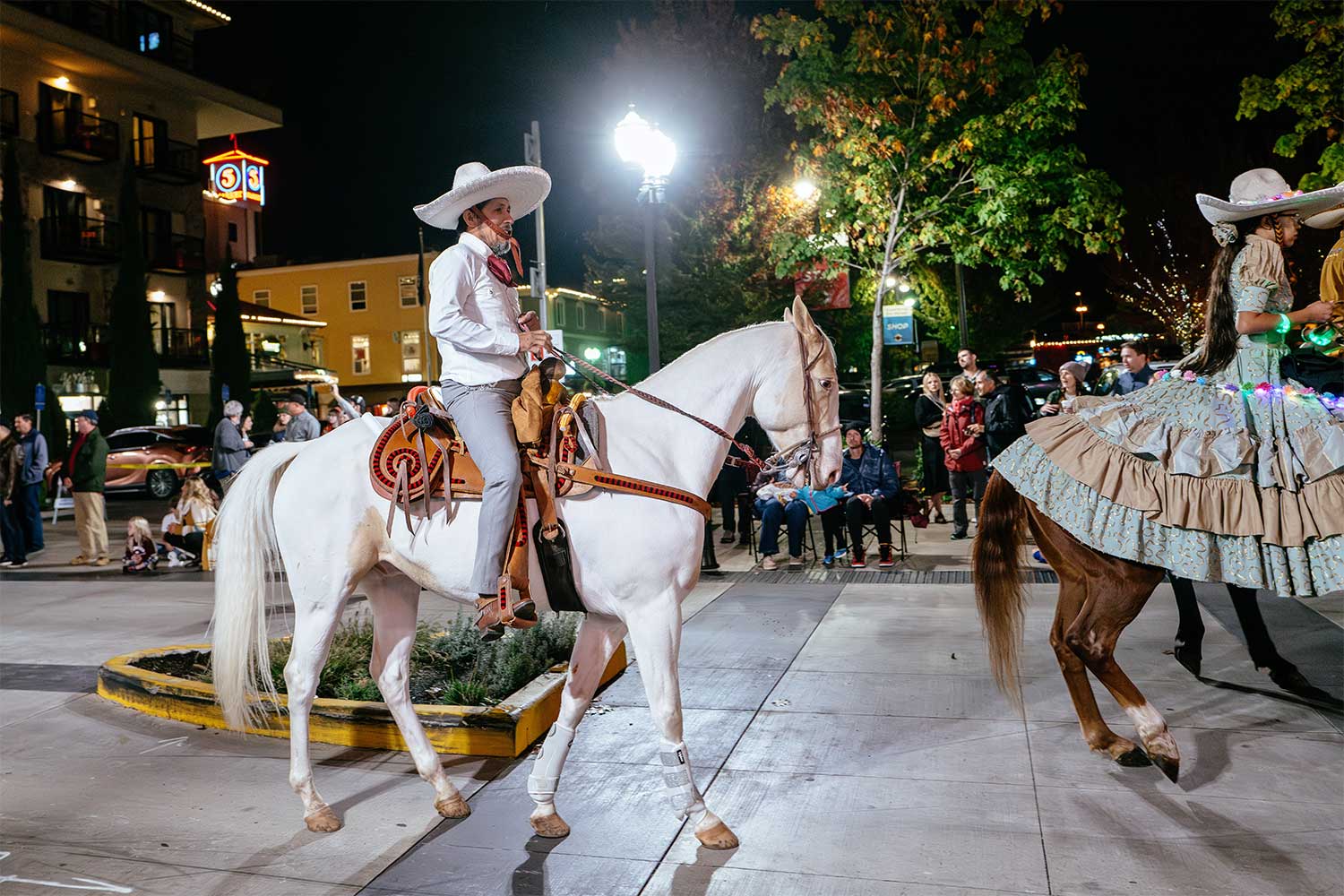
Watchers of the Springfield Christmas Parade in December will have seen a mariachi band, dancers and riders on prancing horses in traditional Mexican attire make their way through the streets of Springfield. Last summer the group participated in the Roseburg Pride Parade, and in October 2023, Comunidad y Herencia Cultural won “Best in Show” in the BEAM BRiGHT Parade in downtown Eugene. Parade-goers will have also have seen local horseman Agustin Cisneros riding in traditional Mexican clothing on the horse he trained, Noodle, with his daughter Emily in escaramuza dress on the family’s horse, Bucky.
“We do what we do to create opportunities, especially for Latinx youth in the area who don’t have the opportunity to see themselves represented or learn about the richness of their own cultural heritage,” Huerta says. “It’s important for us to create those spaces and opportunities to engage.”
Huerta collaborates with Jessica Zapata of Eugene Arte Latino on many of the cultural events. A major one they work on is Noche Cultural in July, which Zapata says lasts from noon to 10 pm with different musicians and artists from México and other countries, traditional food from Latin America, and even a little soccer field for kids to play on. She says the event draws up to 2,000 people to Springfield’s Island Park, where Huerta says, regretfully, they cannot bring the horses, but they can show some of the rope tricks of charrería.
Zapata is a Spanish teacher at Willamette High School in Bethel, and she says that “for me, it’s really important to preserve my language, and I make sure the opportunities we present are bilingual.”
She adds, “One of the things we normally focus on is making sure everything we create is also helping the youth, who have been born here but their parents are from Latin America.”
Some of those youth may not have been able to visit the place their family is from, so much of the outreach — from Spanish lessons to guitar lessons — helps the kids be proud of their family’s heritage and culture.
“So for example,” Zapata says, “there are a lot of youth and they have watched Antonio and want to learn roping and to ride the horses, and we say, ‘OK we can make this happen.’”
And that is where 13-year-old Emily and her father come in. Cisneros learned to ride on his grandfather’s ranch in México when he was 9. His father put him on a horse and told him to take the cows out to the field — a trek that could take an hour.
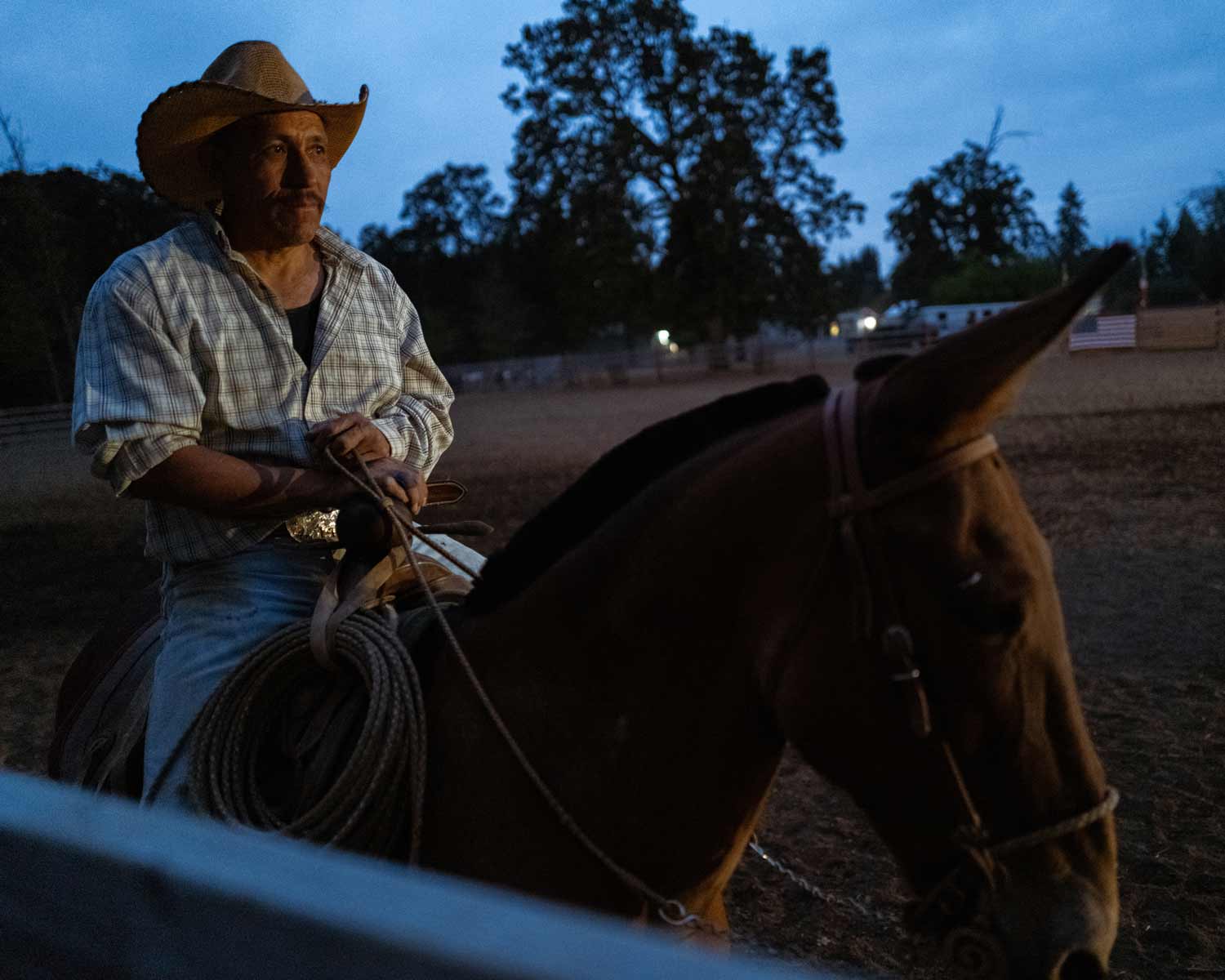
Soon Cisneros had learned to ride and to rope the cattle. He now practices his skills as a horse trainer in Pleasant Hill, and shows off his roping and riding at events like the one in Monroe “just for fun.”
Daughter Emily says she thinks she started riding at age 5. Now she rides on trails, in parades and is learning the art and performance of escaramuza, the part of the charrería that Huerta describes as “basically a folkloric ballet on horseback.”
The mounted ballet involves choreographed numbers with eight women and girls riding at speed in sidesaddles wearing sombreros and dresses. Huerta says the performances relate to the role women played during the Mexican Revolution, protecting themselves, their homes, families, land and belongings while the men were fighting — at times they had to do it on horseback.
Her father brings Emily and Bucky to an arena in Hillsboro to practice, which she says involves both riding skills — with one leg down and the other high over a second saddle horn, “like a jockey” — and memorization of the complex patterns.
Huerta says when he is sharing about this old and rich cultural tradition, “I think about creating these spaces and opportunities where youth of color kind of see themselves represented in both language and culture and come together and appreciate and learn about this old tradition.”
While the events of charrería show off some of the more rarified of México’s equestrian culture, Cisneros, together with his friends and extended family often gather informally to demonstrate their talents, as they did for Mexican Independence Day. This can involve a type of bull riding one would see at an event called jaripeo that includes the dancing horses, caballos bailadores, who prance and almost appear to gallop in place to the music, and monta de toros, men riding bulls and steers without using a hand to hold on, and wrapping up usually with a baile, a dance. Jaripeos take place regularly around Oregon, but Huerta says the state is host to only three recognized charrería events.
In the case of the gathering in Monroe on that warm day last fall, the goal was celebration, not competition, and instead of the tense air that can accompany a horse show or even a rodeo event, at this one the vibrant sounds of the brass instruments’ banda music set the tone for the revelry. Huerta, astride Bucky, showed his rope tricks. Cisneros riding his mule, Samson, participated in an informal game of piales in which the horseman — or in his case, mule rider — ropes the hind legs of the cows. Cisneros clarifies that once the leg is caught, they release it. The animal is not thrown to the ground.
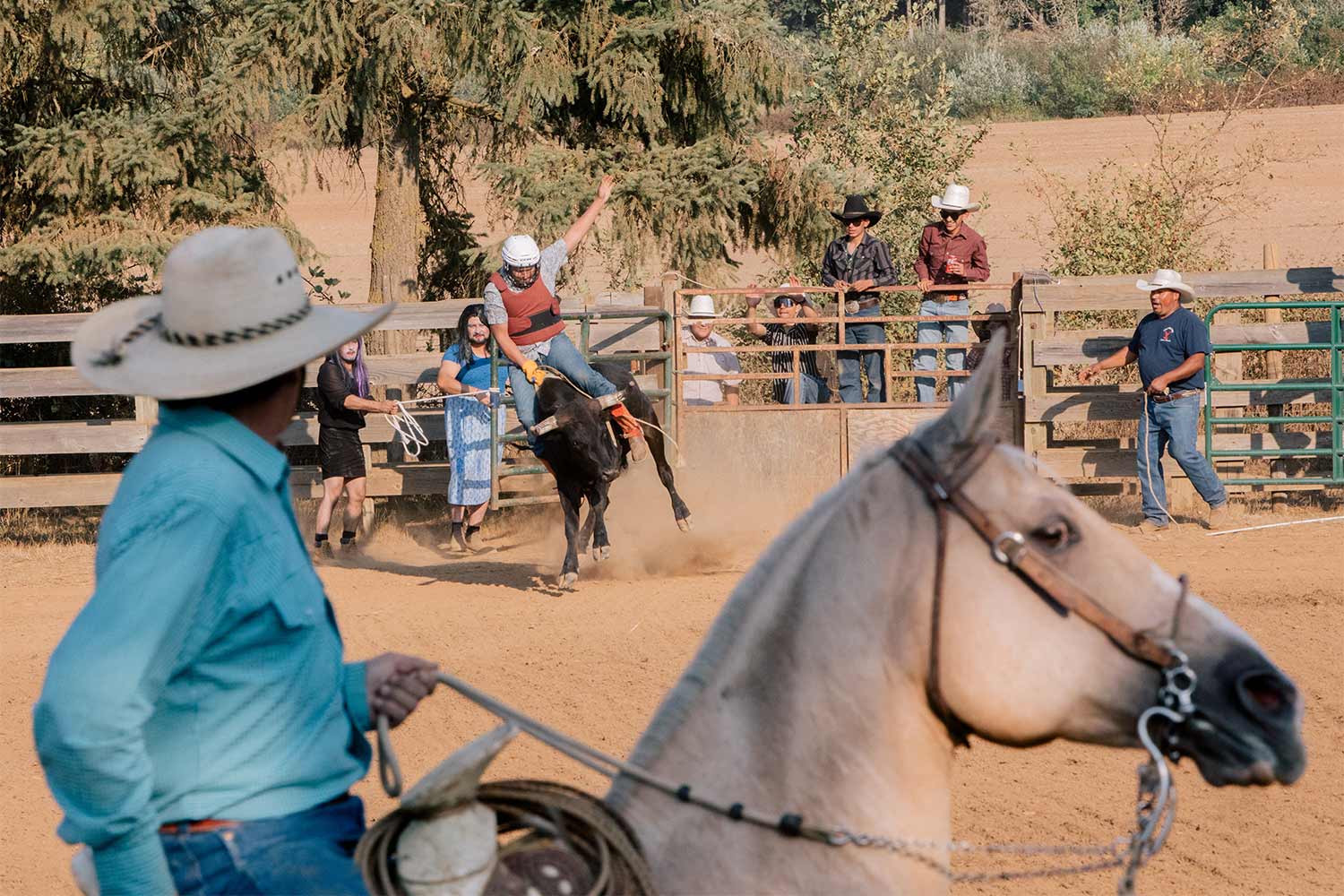
He says it took him a year to train his mule to work cattle; back in México, where he would have been able to work with Samson every day, it would have been faster.
While the riders show off their rope tricks, their dancing horses and their talented mules, the scent of cooking food fills the air, intertwined with the distinctive sounds of the brass instruments.
Here in Lane County, Emily helps Huerta teach riding skills to fellow Latino youth who want to learn to ride horses and to rope. Her parade participation in her green escaramuza dress also becomes a form of outreach. “You get built up,” she says, “with the dancers and the traditional music, and I’m the only escaramuza and the little girls say, ‘Look at that girl,’ and are seeing a part of our culture.” For upcoming events or to support Zapata and Huerta’s work, go to EugeneArteLatino.wordpress.com or NocheCultural.com. Events on the horizon include a performance by musician Leonel Soto in March and celebrations of El Día de Los Niños in April. The Latinx community can also find free virtual discussions with health experts on Noche Cultural’s Facebook page.
